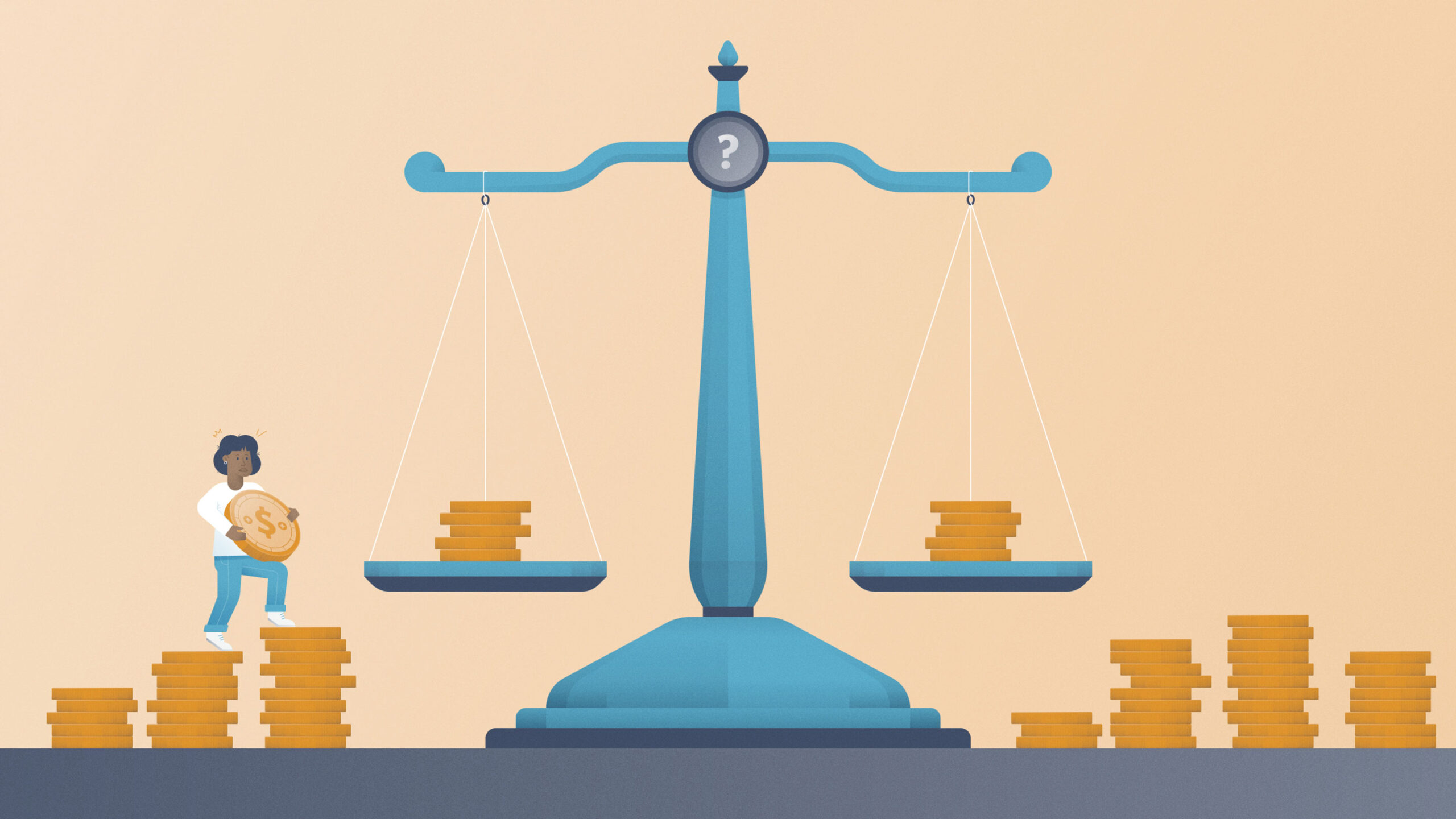How to Weigh Truth With a Balance Scale

James Round for Quanta Magazine
Introduction
Balance-scale puzzles abound in recreational mathematics. The essential element is the humble two-pan balance scale — a staple of commerce over the millennia that’s still found in bustling rural bazaars in the developing world. The simplest versions consist of a metal beam from which hang two pans at equal distances from the central support or fulcrum.
The double-pan balance scale is an iconic and romantic object in science and art. In science, it has been the basis of humanity’s primitive concept of weight starting from the first “Eureka” moment — Archimedes’ triumphant discovery (even if he didn’t actually shout “Eureka”) of his principle of weight and mass, leading to accurate analytical balances used in chemistry and ultimately to Dalton’s atomic theory. In art and the humanities, a two-pan scale in stately equilibrium is a symbol of balance, equality and, by extension, justice.
In recreational mathematics, the balance scale is an endless source of puzzles in which objects, generally coins, are balanced against each other in order to find the counterfeit coins among them. The counterfeit coins are either heavier or lighter than the real ones. These puzzles are excellent math training tools — they require precise and elaborate logic requiring all eventualities to be thought out in detail. In addition, they teach the fundamentals of generalization, leading naturally to the pursuit of formulae to describe how the number of coins you can successfully search changes in relation to the number of times you’re allowed to weigh the coins. And finally, you can create countless variations of these puzzles by adding all kinds of conditions to the mix.
Here are some of my favorite such problems, starting with two classics, followed by three variations with added complications. In each case, you can always look for a general formula, even when it is not asked for explicitly.
Note that in all these puzzles, we do not provide standard weights for the real coins. You have to weigh the coins against each other. Also, it is assumed that the balance is sensitive enough to detect a single light or heavy coin among the standard ones.
Puzzle 1
You have eight identical-looking coins. One is counterfeit and lighter than the others, which have identical weights. Find the bad coin in two weighings. Find the general formula for the maximum number of coins for which you can find the counterfeit one in x weighings.
Puzzle 2
You have 12 identical-looking coins. One is either heavier or lighter than the others, which have identical weights.
- Find the bad coin in three weighings.
- What is the maximum number of coins for which you can find the bad one in four weighings? Describe how you would find the fake coin.
Puzzle 3
This is a variation of puzzle 1. You again have eight identical-looking coins, one of which is lighter than the others. However, now you have three scales. Two of the scales work, but the third is broken and gives random results (it is sometimes right and sometimes wrong). You do not know which scale is broken. How many weighings will it take to find the light coin?
Puzzle 4
You have 16 coins, eight of which are heavy and of the same weight. The other eight are light and of the same weight. You do not know which coins are heavy or light. The coins look identical except for one that has special markings. With one good scale, can you figure out if the special coin is light or heavy in three weighings? What’s the maximum number of coins you can start with and successfully solve this problem in four weighings?
As fun as it is to answer these questions, the conditions imposed in balance-scale puzzles have always seemed arbitrary to me. How can you know there’s exactly one bad coin? That thought led me to our last puzzle question.
Puzzle 5
You have n identical-looking coins, some of which are counterfeit and lighter than the others. All you know is that there is at least one counterfeit coin and that there are more normal coins than counterfeit ones. Your job is to detect all the counterfeit coins.
Construct the integer sequence tracking the number of coins you can successfully search as the number of weighings increases from zero. Could it be a new entry for the Online Encyclopedia of Integer Sequences (OEIS)? Or is it already known?
Clearly, we could come up with ways to test an endless combination of coins. If you have a favorite variant that highlights a different mathematical insight, please feel free to post it in the comments section below.
Happy puzzling, and stay balanced!
Editor’s note: The reader who submits the most interesting, creative or insightful solution (as judged by the columnist) in the comments section will receive a Quanta Magazine T-shirt or one of the two Quanta books, Alice and Bob Meet the Wall of Fire or The Prime Number Conspiracy (winner’s choice). And if you’d like to suggest a favorite puzzle for a future Insights column, submit it as a comment below, clearly marked “NEW PUZZLE SUGGESTION.” (It will not appear online, so solutions to the puzzle above should be submitted separately.)



